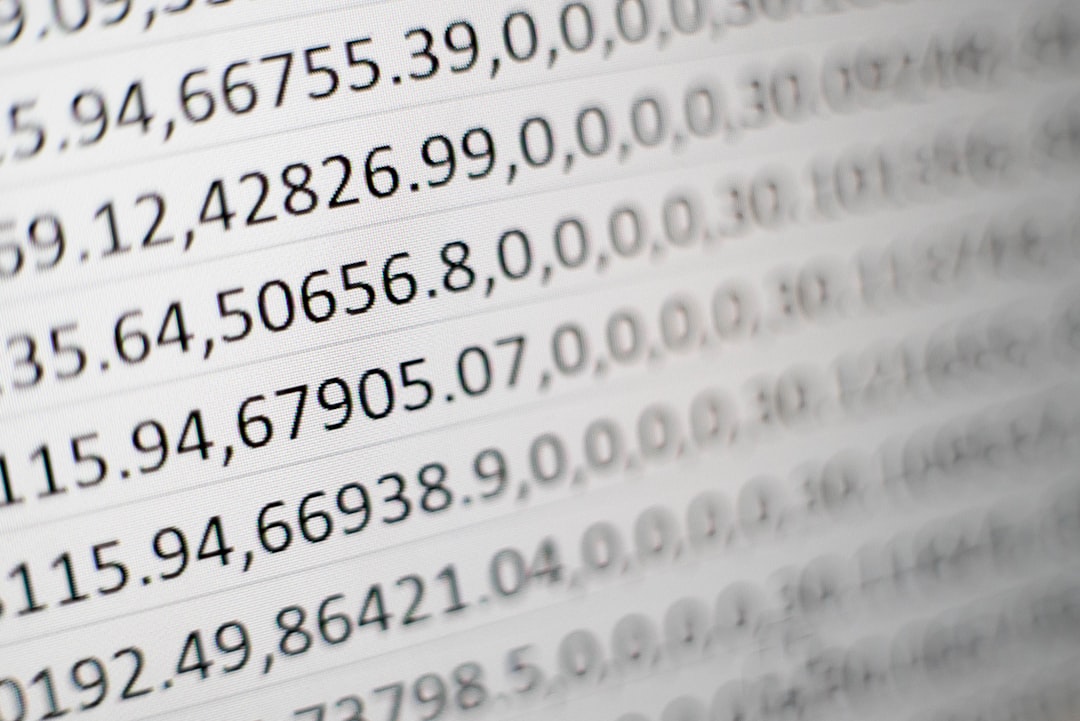At its core, Tableau is a powerful software tool designed to help users transform raw data into comprehensible and visually appealing formats. By enabling users to create interactive and shareable dashboards, Tableau allows organizations to glean insights from their data, facilitating informed decision-making.
The platform is renowned for its user-friendly interface, which empowers individuals with varying levels of technical expertise to engage with data effectively. The origins of Tableau date back to 2003 when it was founded by a group of computer scientists from Stanford University. Since then, it has evolved significantly, becoming a staple in many industries, including finance, healthcare, and retail.
The software supports a wide array of data sources, from spreadsheets to cloud databases, making it versatile for businesses of all sizes. As organizations increasingly recognize the importance of data-driven strategies, Tableau stands out as a vital tool that bridges the gap between complex data sets and actionable insights.
Key Takeaways
- Tableau is a powerful data visualization tool that helps businesses make sense of their data.
- Data visualization is crucial for businesses to understand trends, patterns, and insights from their data.
- Tableau allows for robust data analysis, enabling businesses to make data-driven decisions.
- Interactive dashboards created with Tableau provide a user-friendly way to explore and understand data.
- Integrating Tableau with existing business systems can streamline data analysis and decision-making processes.
The Power of Data Visualization in Business
Data visualization is more than just a trend; it is a fundamental aspect of modern business strategy. In an age where data is generated at an unprecedented rate, the ability to interpret and present this information visually is crucial. Effective data visualization helps organizations identify patterns, trends, and anomalies that might otherwise go unnoticed in raw data.
By converting complex datasets into intuitive graphics, businesses can communicate insights more clearly and persuasively to stakeholders. Moreover, the power of data visualization lies in its ability to enhance storytelling. When data is presented visually, it becomes easier for audiences to grasp key messages and understand the implications behind the numbers.
This storytelling aspect is particularly important in business settings where decisions must be made quickly and based on accurate information. By leveraging visual tools, companies can foster a culture of data literacy, encouraging employees at all levels to engage with data and contribute to strategic discussions.
Leveraging Tableau for Robust Data Analysis

Tableau’s capabilities extend far beyond simple chart creation; it offers robust analytical features that empower users to conduct in-depth data analysis. One of the standout features of Tableau is its ability to connect to multiple data sources simultaneously.
This seamless integration allows for a more holistic view of business performance. Additionally, Tableau provides advanced analytical tools such as trend lines, forecasting, and clustering. These features enable users to perform sophisticated analyses that can uncover hidden insights within their data.
For instance, businesses can use Tableau’s forecasting capabilities to predict future sales trends based on historical data, allowing them to make proactive decisions regarding inventory management or marketing strategies. By harnessing these analytical tools, organizations can gAIn a competitive edge and drive growth through informed decision-making.
Creating Interactive Dashboards with Tableau
| Metrics | Value |
|---|---|
| Number of Interactive Dashboards | 10 |
| Number of Users | 100 |
| Engagement Rate | 75% |
| Average Session Duration | 5 minutes |
One of the most compelling aspects of Tableau is its ability to create interactive dashboards that engage users and facilitate exploration of data. Unlike static reports, interactive dashboards allow users to drill down into specific metrics, filter data by various dimensions, and visualize changes over time. This interactivity not only enhances user engagement but also encourages deeper analysis by allowing stakeholders to explore the data that matters most to them.
Creating these dashboards is a straightforward process thanks to Tableau’s drag-and-drop interface. Users can easily select the data they want to visualize and choose from a variety of chart types—such as bar graphs, line charts, or heat maps—to best represent their findings. Furthermore, Tableau’s customization options enable users to tailor dashboards to their specific needs, incorporating branding elements or specific color schemes that align with corporate identity.
This level of personalization ensures that dashboards are not only functional but also visually appealing.
Integrating Tableau with Existing Business Systems
For organizations looking to maximize their investment in Tableau, integration with existing business systems is essential. Tableau’s compatibility with various software solutions allows businesses to streamline their workflows and enhance their data analysis capabilities. Whether it’s integrating with customer relationship management (CRM) systems like Salesforce or enterprise resource planning (ERP) systems like SAP, Tableau can pull in relevant data from these platforms to provide a comprehensive view of business performance.
Moreover, Tableau’s API capabilities enable developers to create custom integrations tailored to specific organizational needs. This flexibility means that businesses can automate data updates and ensure that their dashboards reflect real-time information without manual intervention. By integrating Tableau with existing systems, organizations can eliminate silos of information and foster a more collaborative approach to data analysis across departments.
Empowering Decision-Making with Tableau

Empowering Decision-Making with Tableau
Tableau is a business intelligence tool that excels in empowering decision-making by providing users with easy access to visualized data insights. This enables stakeholders to make informed decisions quickly and confidently. The platform’s ability to present complex information in an easily digestible format means that even non-technical users can engage with the data and contribute to strategic discussions.
Easy Access to Data Insights
By providing users with easy access to visualized data insights, Tableau enables stakeholders to make informed decisions quickly and confidently. The platform’s ability to present complex information in an easily digestible format means that even non-technical users can engage with the data and contribute to strategic discussions.
Collaborative Features for Enhanced Decision-Making
Furthermore, Tableau’s collaborative features enhance decision-making processes by allowing teams to share insights and dashboards seamlessly. Users can publish their work to Tableau Server or Tableau Online, where colleagues can access the latest reports and analyses from anywhere in the world.
Fostering a Culture of Transparency and Collaboration
This level of accessibility fosters a culture of transparency and collaboration within organizations, ensuring that everyone is aligned on key metrics and objectives.
Overcoming Common Challenges in Tableau Implementation
While Tableau offers numerous benefits, organizations may encounter challenges during implementation. One common hurdle is ensuring that users are adequately trained to utilize the platform effectively. Without proper training, employees may struggle to navigate the software or fully leverage its capabilities.
To address this issue, organizations should invest in comprehensive training programs that cater to different skill levels, ensuring that all users feel confident in their ability to use Tableau. Another challenge lies in data governance and security. As organizations integrate multiple data sources into Tableau, it becomes crucial to establish clear protocols for data access and management.
Ensuring that sensitive information is protected while still allowing users access to relevant data requires careful planning and execution. By implementing robust governance frameworks and security measures, organizations can mitigate risks associated with data breaches while maximizing the value derived from their analytics efforts.
Maximizing the Potential of Tableau for Business Growth
To truly harness the potential of Tableau for business growth, organizations must adopt a strategic approach to their analytics initiatives. This involves not only investing in the right technology but also fostering a culture that values data-driven decision-making at all levels. By encouraging employees to engage with data regularly and providing them with the tools they need to succeed, businesses can unlock new opportunities for innovation and efficiency.
Additionally, organizations should continuously evaluate their use of Tableau and seek ways to optimize their analytics processes. This could involve exploring new features or updates released by Tableau or seeking feedback from users on how the platform can better serve their needs. By remaining agile and responsive to changing business requirements, organizations can ensure that they are maximizing the value of their investment in Tableau and driving sustainable growth in an increasingly competitive landscape.
In conclusion, Tableau stands as a powerful ally for businesses seeking to leverage data for strategic advantage. From its intuitive interface and robust analytical capabilities to its ability to create interactive dashboards and integrate with existing systems, Tableau offers a comprehensive solution for modern data visualization needs. By overcoming implementation challenges and fostering a culture of data-driven decision-making, organizations can unlock the full potential of Tableau and position themselves for success in an ever-evolving marketplace.
Unfortunately, none of the provided links directly relate to Tableau or topics such as data visualization, robust analysis, business intelligence, interactive dashboards, or data integration. These links primarily focus on concepts related to the metaverse and virtual spaces, which are distinct from the data-centric themes associated with Tableau. If you are looking for resources specifically related to Tableau and its capabilities in data visualization and business intelligence, I recommend searching for articles or resources that specifically mention these tools and topics.
FAQs
What is Tableau?
Tableau is a data visualization and business intelligence tool that allows users to create interactive and shareable dashboards, as well as perform robust data analysis and integration.
What are the key features of Tableau?
Tableau offers a range of features including data visualization, interactive dashboards, robust data analysis, data integration, and the ability to share insights and collaborate with others.
How does Tableau help with data visualization?
Tableau provides a user-friendly interface for creating visually appealing and interactive data visualizations, allowing users to explore and understand their data in a more intuitive way.
What is the role of Tableau in business intelligence?
Tableau helps businesses make data-driven decisions by providing tools for data analysis, visualization, and sharing insights, enabling users to gain valuable business intelligence from their data.
How does Tableau support data integration?
Tableau allows users to connect to and integrate data from various sources, such as databases, spreadsheets, and cloud services, enabling a comprehensive view of the data for analysis and visualization.
What are the benefits of using Tableau for data analysis?
Tableau offers robust data analysis capabilities, including advanced calculations, statistical functions, and predictive analytics, empowering users to derive meaningful insights from their data.











Leave a Reply